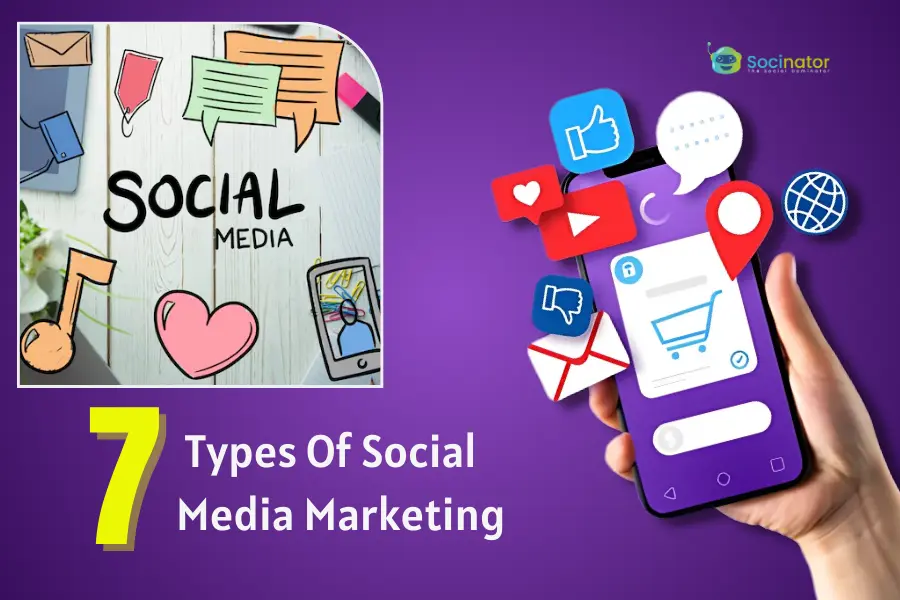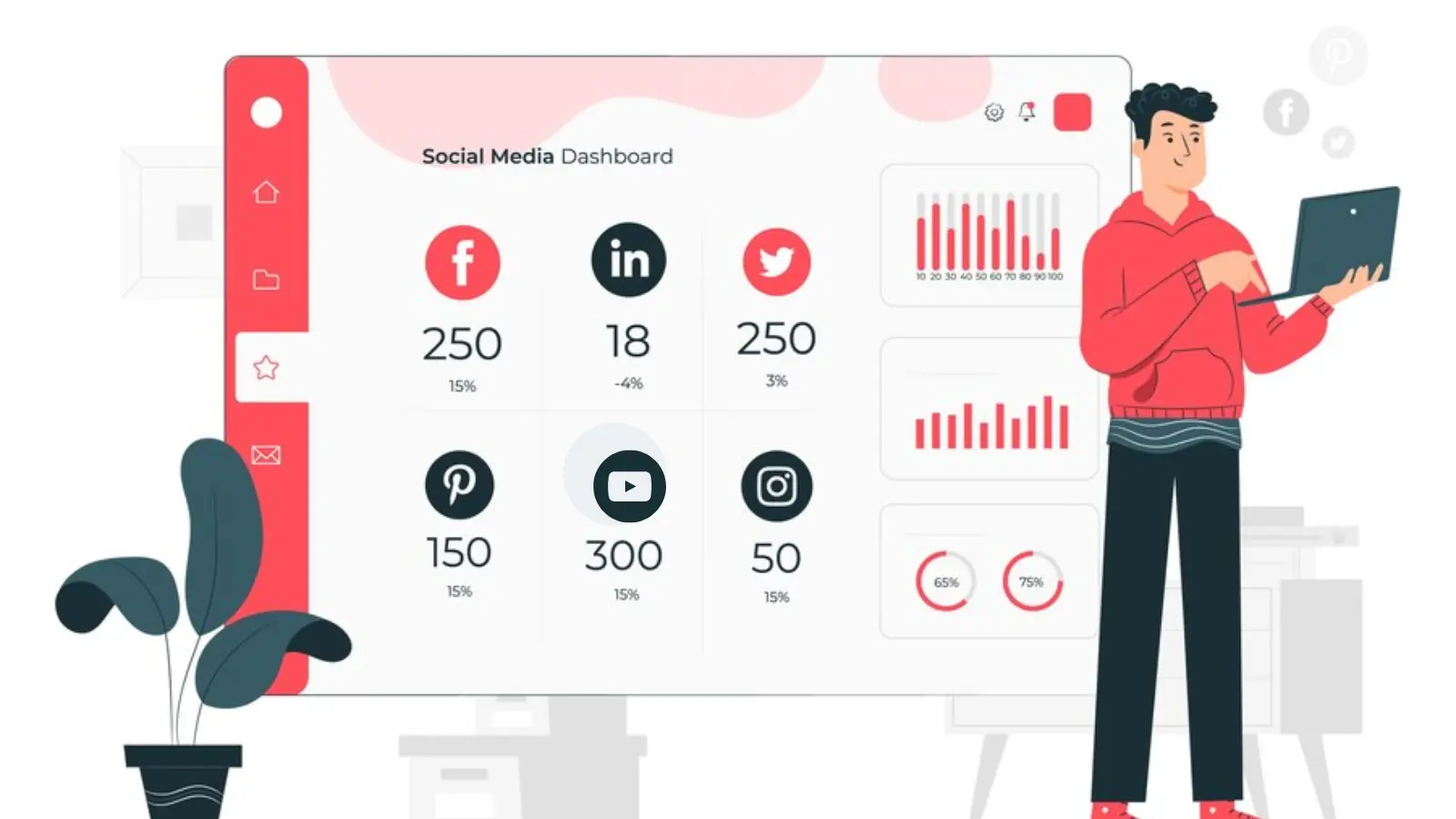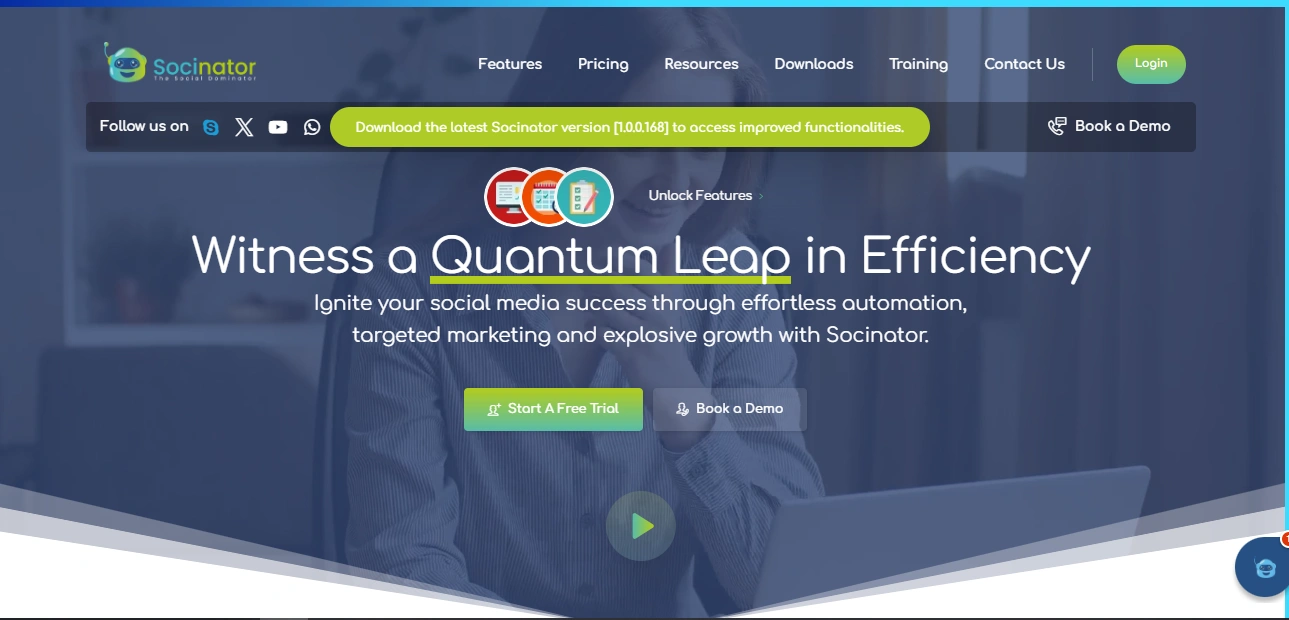Recent research shows that over 5.07 billion people use social media globally, meaning that about 60% of the population uses social platforms. The significance of these numbers is hard to ignore, especially for businesses aiming to capture attention, build relationships, and drive sales. Yet, social media marketing isn’t a one-size-fits-all approach. From content creation to paid advertising, social media marketing comes in various types, each suited to specific goals and audience behaviors.
In this comprehensive guide, we’ll delve into the key types of social media marketing and how you can leverage them to fuel your growth. As you read, you’ll also discover how integrating these methods with an effective social media marketing strategy can drive engagement and boost brand visibility.
Listen To The Podcast Now!
Role Of Social Media Marketing
 Social media marketing is vital for building an interactive and engaging online presence. It allows brands to connect with audiences on a global scale, establishing trust and credibility. By leveraging the types of social media marketing, businesses can boost their visibility, drive traffic, and create meaningful relationships with both customers and potential employees.
Social media marketing is vital for building an interactive and engaging online presence. It allows brands to connect with audiences on a global scale, establishing trust and credibility. By leveraging the types of social media marketing, businesses can boost their visibility, drive traffic, and create meaningful relationships with both customers and potential employees.
One of the standout advantages of social media marketing is its ability to facilitate real-time interactions. Whether you’re answering customer questions, addressing concerns, or showcasing your products, social platforms allow brands to engage directly with their audience. This interaction leads to increased website traffic, exposure, and overall brand growth.
However, to achieve these benefits, having an effective social media marketing strategy is non-negotiable. With nearly two-thirds of internet users active on social media, businesses need to be strategic about which platforms they use. Each platform offers unique features and caters to different demographics, making it crucial to select the right one for your audience.
Also Read
Why Social Media Marketing Software Is Important For Your Business?
7+ Types Of Social Media Content You NEED To Post
Organic Vs Paid Social Media: Which One’s Right For You?
The Core Elements of Social Media Marketing
Before exploring the different types of social media marketing, it’s essential to understand its foundation. Social marketing is more than posting photos or sharing articles. It’s about building a social media strategy that creates value, nurtures customer relationships, and drives results.
A robust social media marketing strategy is built around three fundamental elements: audience engagement, content creation, and analytics. Knowing your audience’s needs, producing relevant content, and analyzing performance data will determine the success of your campaign. With this in mind, let’s break down the various types of social media marketing and their unique roles.
Types Of Social Media Marketing
-
Content Marketing on Social Media
Content marketing is often considered the backbone of social media efforts. It involves sharing valuable and informative content, such as blog posts, infographics, videos, and more, to educate and engage your audience. High-quality social media marketing content increases brand credibility and attracts potential customers by addressing their pain points or interests.
- Best platforms: Facebook, LinkedIn, Instagram, and YouTube
- Benefits: Drives traffic, increases engagement, and builds trust
- How to get started: Research your audience’s preferences and create content that adds value to their social media experience.
Content marketing is crucial to any social marketing plan, fostering deeper connections and encouraging long-term loyalty. But how does this differ from influencer marketing, which involves content creation? Let’s move on and explore more types of social media marketing to find out.
-
Influencer Marketing
Influencer marketing involves partnering with individuals holding a strong, engaged following on social media to promote your brand. These influencers—ranging from celebrities to micro-influencers—have built trust with their audience, making them ideal advocates for products or services.
Influencers can play a pivotal role in amplifying brand messages for businesses to gain quick visibility. However, to maximize results, brands must choose influencers who align with their values and target audience.
- Best platforms: Instagram and YouTube
- Benefits: Increased brand awareness, access to niche markets, credibility
- How to get started: Identify influencers who resonate with your audience and collaborate on campaigns that feel authentic to their followers.
Now that we’ve explored influencer marketing, let’s look at how paid advertising, one of the other types of social media marketing differs in its approach and impact.
-
Paid Social Media Advertising
Paid social media advertising allows brands to promote their content, services, or products by paying for ad space on platforms. Whether it’s Facebook Ads or Instagram’s sponsored posts, paid ads offer targeted reach and immediate visibility to a broader audience.
The primary advantage of these types of social media marketing is its ability to target specific demographics based on location, interests, and online behavior. It makes it easier to deliver highly relevant content to the right people at the right time.
- Best platforms: Facebook, Instagram, LinkedIn, Twitter
- Benefits: Precise targeting, immediate visibility, measurable results
- How to get started: Set a budget, define your audience, and craft ad campaigns that align with your marketing goals.
While paid advertising offers instant results, another focuses on creating organic, long-lasting connections—community building. Let us discuss these types of social media marketing
-
Community Building and Engagement
At its core, social media is about fostering relationships. Community building involves creating and nurturing a group of loyal followers who actively engage with your brand. Whether through Facebook Groups, Twitter chats, or LinkedIn communities, businesses can develop an active, engaged community that serves as brand advocates.
Community building offers long-term benefits by developing trust and loyalty among customers. It also provides a direct line to understand customer feedback, concerns, and interests for businesses.
- Best platforms: Facebook, LinkedIn, Reddit
- Benefits: Strong customer loyalty, brand advocacy, direct feedback
- How to get started: Create a space where your audience can interact, ask questions, and share their thoughts.
Once your community is thriving, the next step is managing and analyzing your efforts, which brings us to our next and other types of social media marketing.
-
Social Media Management and Analytics
Effective social media marketing requires more than just posting content—it requires consistent management and data analysis. Social media management software can streamline your marketing efforts by scheduling posts, tracking performance, and responding to audience interactions across multiple platforms. An efficient social media management tool like Socinator can also help you post to all social media at once, thus saving you precious hours.
Analytics tools give you insights into what is working and what needs improvement. With data on engagement rates, impressions, and clicks, you can fine-tune your campaigns for better results.
- Best platforms: Socinator
- Benefits: Time-efficient, performance insights, consistent branding
- How to get started: Invest in a reliable social media marketing software that suits your needs and offers in-depth analytics.
While management and analytics help optimize your social marketing efforts, businesses should focus on the visual aspect, especially in an image-driven world.
-
Visual Storytelling and Video Marketing
Social media is increasingly visual, with platforms like Instagram and YouTube dominating the space. Visual storytelling through images and videos helps brands connect emotionally with their audience, making it easier to communicate key messages engagingly.
- Best platforms: Instagram and YouTube
- Benefits: Emotional engagement, higher conversion rates, memorable branding
- How to get started: Incorporate high-quality visuals into your content strategy and experiment with video formats such as tutorials, behind-the-scenes clips, and live streaming.
While visual storytelling is essential, some brands take things further by using user-generated content (UGC) to enhance credibility and engagement.
-
User-Generated Content (UGC)
UGC involves leveraging content created by your audience, such as reviews, testimonials, or customer photos, to boost your brand’s authenticity. Sharing UGC not only builds trust but also encourages your audience to engage with your brand on a deeper level.
- Best platforms: Instagram, Twitter, Facebook
- Benefits: Increased trust, authentic engagement, social proof
- How to get started: Create campaigns or hashtags encouraging users to share their experiences with your brand.
Now that you have explored the various types of social media marketing, it is time to determine which strategies are best suited for your business. But before diving into that, let us introduce a powerful automation tool that can streamline and enhance your entire social media marketing journey, making it more efficient and effective.
Socinator – Social Media Automation Tool
Socinator is a powerful social media automation tool designed to simplify and optimize your social media management. With its intelligent features, you can automate routine tasks, streamline your engagement, and focus more on creating meaningful connections and growing your online presence. Here’s a breakdown of how Socinator can help:
Activity Insights & Reports
Track and analyze all your social media activity in real time. Get detailed performance reports that help you refine your strategy and make smarter decisions for future campaigns.
Automated Friend Requests
Grow your network effortlessly by automating sending, accepting, or canceling connection requests. This feature helps you connect with your ideal audience with minimal manual effort.
Auto Likes & Comments
Increase engagement by automatically liking and commenting on relevant posts. This saves you work hours while showing your audience that you value their content and interactions.
Auto Like Pages
Easily engage with relevant business pages by automating the process of liking them, helping you stay connected within your niche.
Post Scheduling & Auto Publishing
Stay consistent with your content by scheduling posts in advance. You can also automate publishing directly from an RSS feed, ensuring your profile stays active without constant oversight.
Auto Share Posts
Automatically share posts to increase visibility and reach.
Direct and effective. This part helps drive traffic and boosts the visibility of essential content.
Broadcast Messages
Send out announcements and updates to your audience in bulk without the hassle. Just a few clicks and your messages are delivered directly via DMs.
Automated Message Replies
Never miss a message again! The auto-reply feature keeps you responsive to new messages 24/7, ensuring seamless communication without requiring constant attention.
Which Types Of Social Media Marketing Is Best For You
To determine which types of social media marketing will work best for you, you need to consider your business goals, audience preferences, and the resources you have available. Here is how you can figure it out:
- Understand Your Audience: Find out which platforms your audience spends the most time on and what content they engage with (e.g., video, images, blogs). It will help you choose the most effective channels for your marketing efforts.
- Align With Business Goals: Identify what you aim to achieve—brand awareness, engagement, lead generation, or sales. Different social media strategies cater to various goals. For example, Instagram ads work great for brand visibility, while educational blog posts help with engagement and nurturing leads.
- Leverage Multiple Approaches: A well-rounded strategy might include content marketing for educational purposes, influencer marketing for credibility, social media ads for reach, and live streaming for interaction. Each platform and marketing method offers unique advantages, allowing you to connect with your audience through various touchpoints.
- Evaluate Resources: Consider your budget, time, and available tools. If you have limited resources, focus on fewer but high-impact strategies, such as Instagram ads or influencer collaborations that fit your niche and budget.
Combining these different types of social media marketing methods—like content marketing, paid ads, influencer partnerships, and live streaming—to create a comprehensive strategy tailored to your audience and business needs.
Wrapping Up
As we’ve explored, the types of social media marketing are varied, each playing a distinct role in helping brands reach their objectives. Whether through content marketing, influencer collaborations, or community building, the key is to craft a well-rounded social media strategy that aligns with your brand values and objectives.
Choosing the right social media marketing strategies for different types of social media marketing depends on comprehending your audience, aligning your efforts with your business objectives, and using resources effectively. By implementing a blend of these strategies, businesses can create a comprehensive approach that resonates with their audience and delivers tangible results.
FAQs
What are the 7 C’s of social media strategy?
Understanding and integrating the 7 C’s enhances your social media strategy:
- Community: Know your audience to tailor your messages.
- Content: Create engaging, valuable posts.
- Curation: Share relevant content from various sources.
- Creation: Produce original content reflecting your brand.
- Connection: Build relationships with your audience.
- Conversation: Engage in dialogue to build trust.
- Conversion: Turn engagement into actionable outcomes.
What are the 4 P’s of social media marketing?
Social media influences all four elements of marketing: Product, Price, Place, and Promotion. It’s integral to the product experience—from design to sales, purchase, service, feedback, and referrals.










